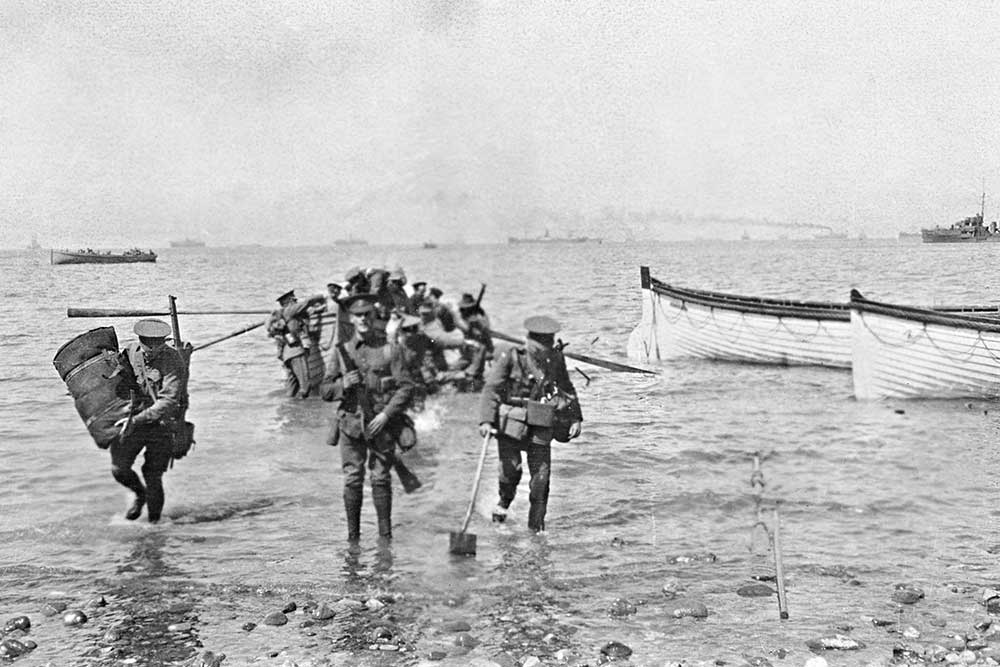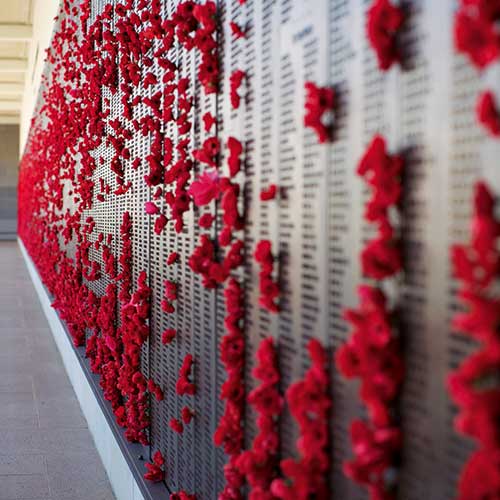
Red poppies could possibly be the easiest plant to grow, even if you’ve never grown flowers from seed before and this is your first try.
They are brilliant in a massed display in the garden or in pots, and they flower for a long period.
All you need is sun, protection from heavy winds, and a good quality, free-draining soil or potting mix.
Simply sow the seeds where you want them to grow, lightly cover with soil or potting mix and keep the area moist until germination.
If you like, you can raise them in seed trays and transplant them once they are well established.
As your poppies grow, keep them well fed with regular applications of a liquid fertiliser such as Yates Thrive Roses & Flowers Liquid Plant Food and Seasol seaweed concentrate.
As flowers finish, pinch them off to encourage more blooms and you’ll enjoy an extended display.
Anzac origins
In early 1915, as the joint units of troops from Australia and New Zealand were being mustered in Egypt prior to the fateful Gallipoli landings, telegraphic signalmen found a convenient way to describe them.
They created an acronym that would end up becoming one of the most powerful and emotive words in the lexicon of our nations, ANZAC.
Soon after, on 25 April 1915, the initial landing at Gallipoli, this term, replacing the clumsy A and NZ Army Corps, was to become an anchor point for everything that these still young nations stood for.
The Anzac legacy was borne from the blood of the fallen and those who survived the horrors of the ill-fated, eight-month battle for Gallipoli.
Since 1916, 25 April has officially been declared as Anzac Day, and this month marks 100 years since the landing at what is now officially known as Anzac Cove in Turkey.
If you were to ask an Aussie what the emblems of Anzac are they’d likely list a couple of things, after mateship and larrikinism that is.
The slouch hat with its rising sun badge is one of the most distinctive images. The red poppy has also increasingly become a stark symbol.

1st Divisional staff land at Anzac Cove on 25 April 1915 to begin the ill-fated Gallipoli campaign. Image: Australian War Memorial

Why the red poppy
One of the first plants to pop up in the battlefields of France and Belgium during World War I, the red poppy is also not surprisingly known as the Flanders poppy.
The sight of the red flower moved soldier John McCrae to compose In Flanders Fields, a poem still widely known today.
In turn, humanitarian Moina Michael was inspired by the poem to always wear a red silk poppy in remembrance of those killed.
This symbolic act spread, and soon the Allied nations adopted the poppy as the commemorative flower for Armistice Day.
By 1940, Australian World War II troops were using poppies for remembrance on Anzac Day.
More recently, in 1993, the enormous display of poppies at the Australian War Memorial for the internment of the Unknown Soldier had a huge visual impact.

